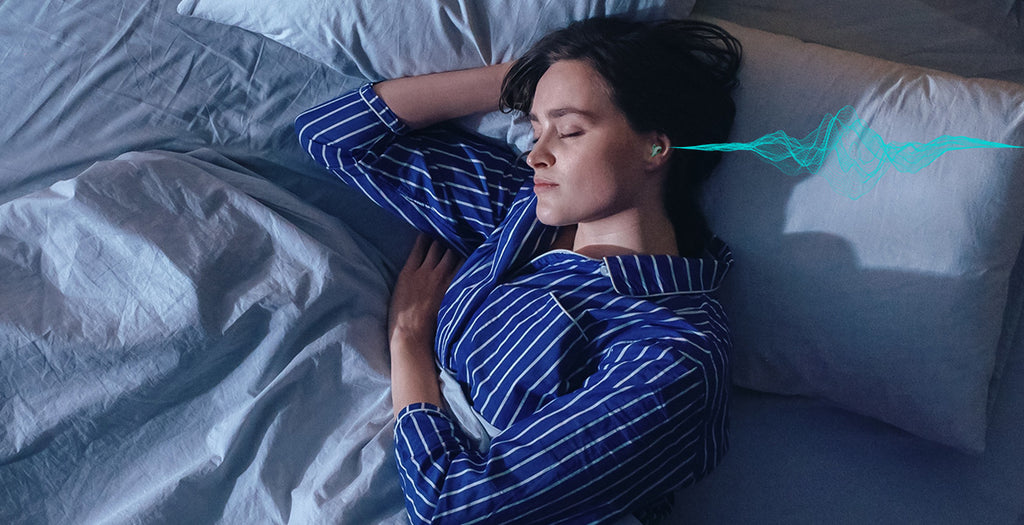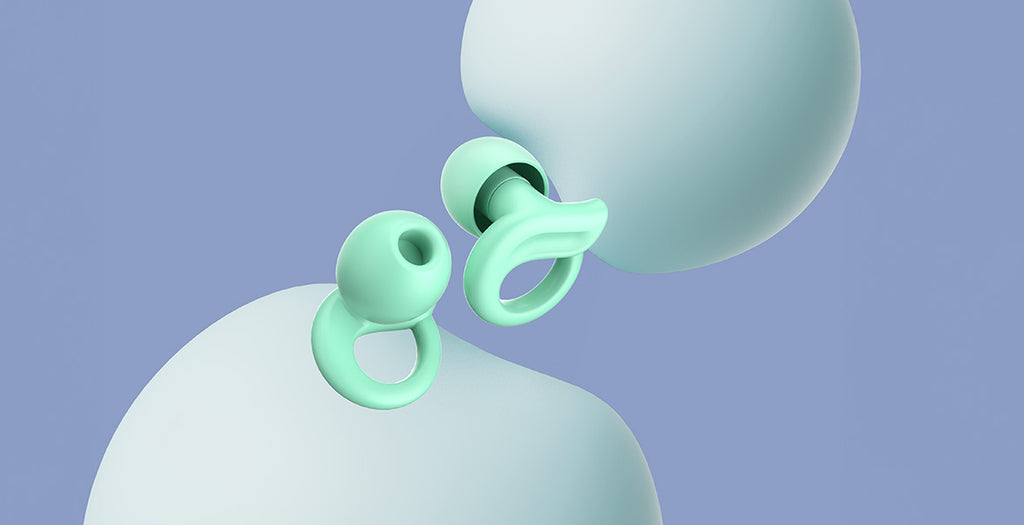Introduction
Noise sensitivity, also known as hyperacusis, is a condition characterized by an unusual intolerance to ordinary environmental sounds. For those suffering from noise sensitivity, daily ambient noises that most people tune out and ignore can provoke immense distress and discomfort. Sounds like a clock ticking, traffic passing by, appliances humming, or people talking and laughing can feel unbearably loud and abrasive.

This increased sensitivity to normal sounds often severely impacts patients' ability to concentrate, socialize, relax, and even sleep. Exposure to unavoidable noise sources prompts headaches, anxiety, nausea, and other difficult symptoms. To minimize this overload, some with noise sensitivity isolate themselves as much as possible to limit noise exposure. However, this is not a sustainable solution for functioning in the world.
Fortunately, earplugs offer an effective way to manage noise sensitivity. By providing a barrier that blocks some sound waves from entering the ear canal, earplugs can selectively reduce the volume of ambient noise to more tolerable levels. This allows patients to remain in moderately noisy environments while filtering excessive sound, rather than having to flee anyplace with normal noise levels.
Causes of Noise Sensitivity
There are a number of factors that can lead to increased sensitivity to sounds, including:
- Neurological disorders such as autism, ADHD, migraines, PTSD, and traumatic brain injuries often involve sensory processing differences. Patients struggle to filter certain auditory stimuli, finding sounds painful or distracting.
- Auditory system conditions like tinnitus, Meniere's disease, otosclerosis, and hyperacusis damage structures involved in hearing and balance. This reduces sound tolerance and the ability to ignore ambient noise.
- Certain medications like antibiotics, chemotherapies, antimalarials, and some antidepressants are ototoxic, causing reversible hearing loss and sensitivity as side effects. Radiation cancer treatments can also impact auditory structures.
- Age-related hearing loss associated with aging auditory pathways leads to declines in the ability to process and filter sounds efficiently. The elderly often have reduced tolerance for noisy environments.
- Prolonged exposure to loud noise damages the delicate hair cells in the cochlea, causing noise-induced hearing loss and reduced dynamic range. This is common in occupations like construction, airports, and the military, or in leisure activities like concerts.
In summary, noise sensitivity can arise from neurological differences, ear damage, medication side effects, aging, and environmental exposures. An interdisciplinary approach assessing all these potential factors is needed to pinpoint the root cause in each patient. This guides appropriate treatments to resolve the specific dysfunction leading to hyperacusis.
Patients with Noise Sensitivity
It's estimated that one in 50,000 people suffers from some degree of noise sensitivity. Certain groups are more prone, including children, the elderly, and those with neurological or auditory processing disorders. Even mild noise sensitivity poses challenges in managing everyday sounds.
Children's developing nervous systems make them extra sensitive before habituation occurs. Sources like school bells, traffic, and noisy peers can be agonizing. The elderly commonly experience reduced sound tolerance as part of age-related hearing loss. With auditory neurons declining, they strain to filter noise.
Those with conditions like ADHD, PTSD, migraine, or Meniere's disease struggle to tune out noises without distress. Sounds most filter out like clock ticks, chewing, appliances, and barking trigger fight-or-flight reactions. Completing tasks or enjoying activities with unavoidable background noise becomes difficult.
In severe cases, moderate ambient noise provokes great emotional and physical suffering. Socializing, attending events, traveling, and even being home are major hurdles when noise is inescapable. The inability to flee unpleasant sounds leads to anxiety, depression, headaches, nausea, and other effects. The overall quality of life diminishes without solutions for reducing noise exposure.
Earplugs as a Solution

Earplugs help manage noise sensitivity by reducing the amount of sound energy reaching the auditory system. They provide physical barriers that block some external noise waves from entering the ear canal.
Even modest sound attenuation of 5-10 decibels can make noisy environments more tolerable for those with noise sensitivities. Earplugs allow patients to remain in moderately loud spaces like offices, transit, restaurants, etc. without becoming overwhelmed. The frequencies that tend to aggravate hyperacusis most are reduced to non-bothersome levels.
Specialized earplugs can selectively filter out specific high-frequency bands like human speech that individuals may be sensitive to. This allows customization for each patient's particular triggers. The latest foam and silicone earplugs have filters to target narrow frequency ranges for precision sound blocking.
Earplugs offer advantages over alternatives like white noise generators and noise-cancelling headphones. They are more discreet, portable, and cost-effective. Earplugs remain in place inside the ear canal, freeing up hands and eliminating the need to charge batteries.
Importantly, earplugs can be used safely alongside other noise sensitivity therapies like cognitive behavioral techniques, hearing aids, or treatment of underlying conditions. They provide immediate relief while long-term management strategies address root causes. With proper guidance, earplugs are key tools for curating an optimal acoustic environment.
Choosing Proper Earplugs
Selecting the right earplugs is crucial for managing each patient's specific noise sensitivities. An audiologist can recommend the most appropriate options based on the degree of sound intolerance and particular triggers.
The noise reduction rating (NRR) indicates how much sound is blocked. Mild cases only require 14-23 NRR models, while more severe cases need 28-33 NRR for meaningful reduction. However, an extremely high NRR can seem isolating.
Comfort is critical, especially for children and the elderly. Softer silicone plugs with smooth surfaces are gentle on sensitive ear canals and easier to insert and remove. Custom molded plugs provide a precise fit.
Disposable foam earplugs are cost-effective but must be replaced regularly. Reusable filtered plugs are pricier initially but more sustainable long term. Custom options have the highest upfront cost but seal out sound most effectively.
Patients sensitive to narrow high-frequency bands may benefit from specialized acoustic filters in earplugs that only block those specific troubling frequencies.
It's important to follow OSHA guidelines recommending no more than 8 hours of continuous wear per day. All patients should take periodic breaks to avoid ear canal irritation, infection risk, and excessive wax buildup.
With the right earplugs matched to their needs, patients can selectively filter noise for optimal relief while avoiding complete isolation or ear health issues.
Conclusion

In summary, noise sensitivity and hyperacusis afflict millions of patients across all age groups, severely impacting concentration, social functioning, and quality of life. These individuals suffer not due to loudness, but because ordinary environmental sounds feel painfully amplified and impossible to ignore.
Specialized modern earplugs allow customized filtering so each patient can attenuate their unique sound triggers across different frequencies. This grants meaningful sound reduction without fully isolating the user. Experts recommend looking for earplugs that lower noise by at least 5-10 decibels, which provides significant relief for misophonia without completely muffling ambient sound. The goal is to take the edge off and bring triggering noises to a more tolerable threshold.
By lowering ambient noise to tolerable levels, earplugs restore patients' ability to complete tasks, enjoy activities, and socialize with less distraction and anxiety. While not a cure-all, earplugs alleviate the most disruptive symptoms so other therapies can address root causes. With proper guidance from audiologists, earplugs give those with noise sensitivity control over their acoustic environment and their lives. Their disorders no longer relegate them to isolation and suffering.
Read More
- How Many Hours Can You Safely Wear Earplugs? – hearprotek
- 7 Expert Tips for Maintaining Focus During Study – hearprotek
- How to Protect My Ears When Riding a Motorcycle – hearprotek
- How to Protect Your Ears in a Concert? – hearprotek
- Earplugs vs. Earmuffs: Which Offers Better Hearing Protection? – hearprotek












